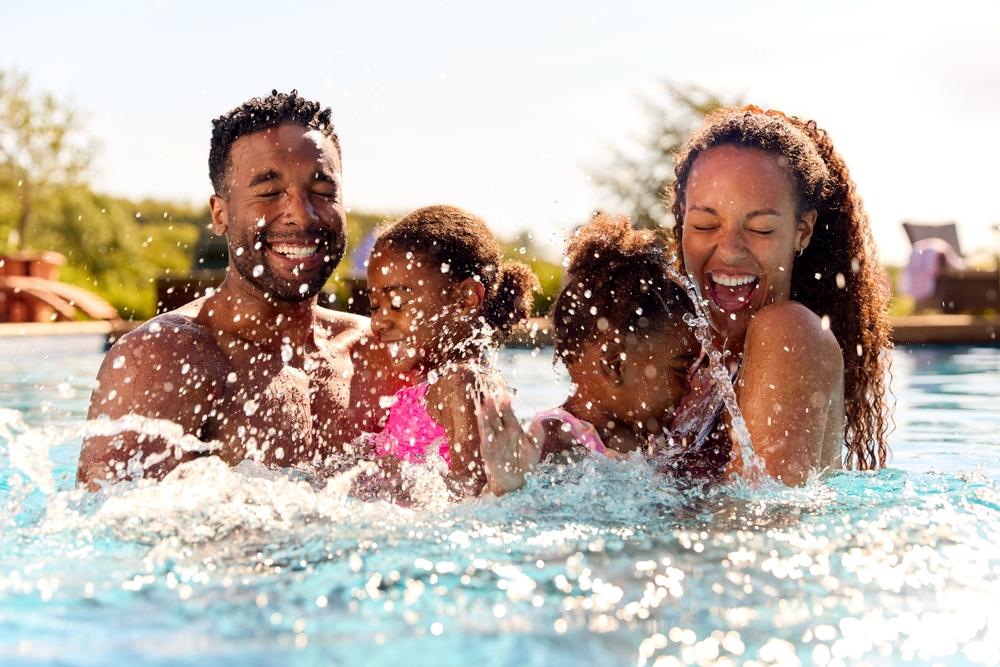 School’s out and summer is officially in full swing, which means all the poolside hangouts, beach days, and time spent having fun in the sun! But if you have littles, it’s crucial to take the proper precautions to ensure proper water safety and sun protection. According to the Centers for Disease Control and Prevention, drowning deaths are on the rise — and it is the leading cause of death for children ages 1 to 4 in the United States.
School’s out and summer is officially in full swing, which means all the poolside hangouts, beach days, and time spent having fun in the sun! But if you have littles, it’s crucial to take the proper precautions to ensure proper water safety and sun protection. According to the Centers for Disease Control and Prevention, drowning deaths are on the rise — and it is the leading cause of death for children ages 1 to 4 in the United States.
READ: Guide to Swim Lessons and Swim Schools In & Around Jacksonville
Safely beat the heat
We all know it’s important to protect our little ones’ sensitive skin from getting sunburned, but the high temps outside can actually be just as dangerous. The American Academy of Pediatrics (AAP) recommends kids play indoors when temperatures reach 90 F or higher. If you and your family need to go out in hot weather for any reason, children should try to avoid sun exposure while the UV rays are strongest (between 10 a.m. and 4 p.m.).
Also remember the following sun safety tips:
- If your baby is younger than 6 months old, keep them out of direct sunlight and temperatures above 90.
- Keep your baby in the shade as much as possible — a covered stroller and a wide-brimmed hat can also be helpful.
- Thirty minutes before going outside, apply a broad-spectrum sunscreen with at least 30 SPF to any areas of your child’s body that aren’t covered by clothing, especially the face, back of the neck, tips of the ears, hands, and tops of the feet. Reapply sunscreen every two hours, sooner if your child goes into the water. If swimming, consider a water-resistant formula.
Drowning prevention tips
Your baby or toddler can build strength and coordination through playing in the water with a parent or trusted caregiver. Learning how to swim and getting comfortable in the pool will also help them stay safe in the water as they get older. Here are some tips for preventing potential accidents.
READ: Levi’s Story: The Real Truth About Drowning
Introduce them slowly. When at the pool, start by holding your baby and gently dipping his or her feet in the water — or sit on the steps of the pool together. Once your child is comfortable, try walking around the shallow end of the pool together. Always be sure that your child wears a floatation device or life jacket that is U.S. Coast Guard-approved.
Always stay close by. Babies, toddlers, and young children should never be left alone around water — and that isn’t just limited to pools and the beach. Taking your child to swim lessons is a good first step, but it doesn’t guarantee that tragic accidents or drowning won’t happen.
“Always be within arm’s reach of your child,” says Jessica Winberry, prevention coordinator with THE PLAYERS Center for Child Health at Wolfson Children’s Hospital. “Babies and toddlers are at risk for drowning in bathtubs, toilets, and buckets. Parents and caregivers should take extra steps to ensure safety by emptying water from things in the child’s environment and using toilet locks.”
Designate someone to always be on watch. “Safe Kids recommends assigning a ‘Water Watcher’ during any swim time. This designated adult should remain undistracted so he or she can maintain visual contact of all children in and around the pool,” Winberry adds.
If there are several adults with you, alternate being the “Water Watcher” in 15-minute increments. This ensures that whoever is on duty will be fully focused for that short amount of time, knowing that they’ll soon be relieved to eat, socialize, or go to the bathroom.
Keep a safe setup. If you do have a pool in your backyard, make it very challenging for any child to get near it without you knowing.
“Layers of protection are an important step in drowning prevention. These include door locks, door and pool alarms, and isolation fencing,” says Winberry.
THE PLAYERS Center for Child Health at Wolfson Children’s Hospital provides child injury prevention information through Safe Kids Northeast Florida. Check out more water safety tips here.















